-
Posts
412 -
Joined
-
Last visited
Content Type
Profiles
Forums
Resource Library
Events
Gallery
Blogs
Store
Community Map
Posts posted by hexagon789
-
-
1 minute ago, DJ Dangerous said:
Awesome, thank you!!!
Yes, "diagonally opposite" was what I meant by alternate sides and ends.
Thank you!
No problem. I have scans of the as-built internal layouts if it helps at all.
And as I omitted it above - the composites were converted at various dates. 4 initially in April/May 1973. Then another 1 in 1989 leaving 3. One of the 1973 conversions was then converted back to composite by 1993.
When Sligo became standard class only again the remaining 4 were gradually converted to Standard. The last was 5156 which was still a composite internally as late as May-2005 by photo evidence.
2 minutes ago, flange lubricator said:Magnificent, don't suppose you've one of a Compo?
-
 1
1
-
-
8 minutes ago, DJ Dangerous said:
I see mentions in this thread of Mk2D composites and firsts being converted to standards.
First, when did these conversions take place?
5103 was the first conversion in 1985 being reseated to 62 standards. 5101/02/05 were converted to 56 Standard in 1986 and 5104 was converted 56 standard in 1987 during repairs from the 1985 Newry firebombing.
In 1989 5105 was altered to 62 seats.
5106 remained as full first right to the end of the 1990s when it was first declassified and then converted to Standard Class.
18 minutes ago, DJ Dangerous said:Did it go from having both bathroom windows on the same side to having them on alternate sides and ends of the coach?
No external changes.
18 minutes ago, DJ Dangerous said:Were the doors blocked off or replaced with windows when the composites were converted to standards?
No,the centre doors were still usable.
18 minutes ago, DJ Dangerous said:Did the composite bathroom windows already match the standards?
They were on diagonally opposite corners if that's what you mean?
1 minute ago, DJ Dangerous said:Thank you!
So a converted first would still look like a first externally etc?
Yes, just remove the "I" door markings and change the internal seating to Standard Class
-
 1
1
-
-
21 minutes ago, DiveController said:
So yes then just by removing the end boards I guess. Must have been draughty with a DBTS as the lead operating vehicle
In the cab or the passenger accommodation?
It should really be no worse than an ordinary passenger coach and the driver could always close the cab door to insulate themselves if it was draughty at the expense of elbow room.
-
 1
1
-
-
21 minutes ago, DiveController said:
Any idea if the DBSOs had regular gangways to allow passengers to move thorugh the train when used as regular coaching stock within the rake?
Same as 80 Class DTS vehicles.
-
3 minutes ago, Wexford70 said:
In the later videos there seems to be two generator vans on each rake. Was this the norm?
It's probably like the CIÉ/IR Mk2Ds, one generator van would only be sufficient for a certain number of coaches. That would be my guess.
-
7 minutes ago, gm171 kk said:
When was the DVT used? I know they were used with Hunslets but were they used with 111s and 201s during the 90s?
In formation yes, but only as brake coaches. Their push-pull equipment was for use with the Hunslets, the 111s not being fitted.
The original intention was that in summer an eight coach set with a Hunslet either end would be used, reduced to five coaches with one Hunslet and a driving trailer the other end in winter.
2 hours ago, MOGUL said:The Gatwick's ran with a Gen van converted from a Mk2B BFK, 8911.. But the lads won't be producing that one, I would imagine as it doesn't really fit with the other Mk2Bs being released here..
I'd forgotten that it was a 2B, my brain always associates it with the 2F because the Gatwicks were such.
-
1 hour ago, jhb171achill said:
Four; the original maroon & blue also.
Which is by far the best

On 80s as well... but I digress
-
 2
2
-
 1
1
-
-
1 minute ago, Bumble_Bee said:
Also are these mk2s the 'gatwick set' I see mention of or were they different? I think the ones above are before my time as I remember seeing trains with teal striping, not yellow.
These are Mark 2B design coaches which NIR ordered new from BREL in 1969 and which entered service on a "re-launched" Belfast-Dublin Enterprise.
The so-called Gatwicks were second-hand from GB Train Operating Company Gatwick Express (hence the nickname) where they were used in push-pull sets with Class 73 Electro-Diesels and ex-2HAP Driving Motor Baggage Cars. They were replaced on Gatwick by Class 460 EMUS.
The Gatwicks as used by NIR are Mark 2F design with air-conditioning, originally ordered by BR in 1972 for the West Coast Main Line.
The particular Gatwick ones were previously used on the Midland Main Line between London St Pancras and Nottingham/Sheffield, rendered surplus by HSTs being introduced to the route in 1982/3 they were modified into fixed 2/3-car sets for a re-launched Gatwick Express which was then run as a dedicated non-stop Express service.
Translink obtained 4 of these coach sets in 2001 (married pairs of two coaches), they were withdrawn in 2005 but soon re-instated to provide extra capacity. Although a Driving Trailer (an ex-ONE Mk2F DBSO) was obtained to allow the set to run push-pull, the set was never converted and was withdrawn in 2009.
-
 1
1
-
 1
1
-
-
14 minutes ago, jhb171achill said:
The lower picture is the correct livery; upper one not, by the way. (Just in case anyone is modelling a BNCR or MR (NCC) locomotive.
While "Midland red" was the way of things in Brexitland, the ex-BNCR retained the dark green, until LMS NCC days.
Correct. There was never a full train of them. One each on the up and won day mails to / from Cork and Galway. They were never used elsewhere, expect perhaps as a one-off of some sort long after they were no longer pullmans.
And yes, they ended their days in the dark green, but with lining as above.
I think they ran to Limerick at one point, possibly when first in service, I'm sure I've seen a flier with timings somewhere. I did also read a very short piece in a society publication about the GSR cars which said they later ran to Sligo(!?). I've never come across that anywhere else though, the same publication stated that the underframe of one survived on a vehicle in departmental use until ~1981.
-
 1
1
-
-
3 hours ago, Noel said:
Yes it seems once they sub-contracted out the catering it went rapidly downhill. The Cork train lost the business community as a result. I hear only the enterprise does proper food now. I could be getting mixed up but I regularly travelled to Cork for work in the 80s and remember a host/hostess, sit down menus, linen service, delph, metal knives and forks, and taste wholesome if not gourmet food that was excellent for on board a train. I nearly fell off my seat with surprise when I was told there was a fax machine available and a power socket under the table as well as being offered a glass of champaign with my cooked breakfast. None of this nonsense sandwiches off a trolly with crisps and a can of 7 up like nowadays.
They did offer an at-seat hostess service on the Mk3 sets but it was just known as 'Super-Standard' or 'First Class'. Until the CityGold service was introduced the seating was even 2+2, the difference was more full tables of 4.
Previously similar was offered in 'Super-Standard' in Mk2D sets and select workings utilising mostly Cravens stock including the converted Cravens 'Super-Standards'.
Wasn't so much the catering service as the seating comfort and amenities CityGold improved.
2 hours ago, ShaneC said:Enterprise catering in first is still real good - though not included in the fare as with many UK services. All that's included is the tea/coffee. One of my last travels before the pandemic hit - better burger than you'd get in many burger places:
Seems the difference between it and Citygold is they use a different catering company, IR taking the cheaper tender offer vs. the better food quality / service.
I can't remember when they got rid of the restaurants, was it when the Mk4s replaced the Mk3s on Cork services or earlier? I do remember a website detailing some trips round Ireland in the last year's of loco-haulage, in one post was a picture of a Mk2D 'diner' branded 'Restaurant'. The photographer noted wryly that it was no longer anything of the kind being only a takeaway counter service of light refreshments.
17 minutes ago, exciecoachbuilder said:Yes, you're right Citygold was introduced in 1993.
Thanks for confirming
-
 1
1
-
-
4 hours ago, Noel said:
Fond memories of City Gold to Cork and back in the 80s when there was a decent on board service with hot meals, or enjoy a full Irish breakfast on the 07:40 Dublin to Cork on the comfy m3s.
The days when you could actually eat a hot meal traveling by train. Now only snack food from trolleys on board trolleys.
If they brought proper food back on the trains I'd leave the car at home more when travelling to Cork, Kerry and Galway.
I thought CityGold was introduced in 1993? When Mk3 standards 7104, 7133 and 7156 were converted to CityGold coaches.
Nevertheless the catering offering was by all accounts excellent in this period, rather mirroring BR even to the point of decline going from the 2000s onwards and the loss of traditional restaurant cars.
-
 1
1
-
-
On 18/3/2021 at 2:22 PM, Kenneth Downs said:
The 201 and 66 have capacity for 3250 hp while the 59 and 071 GM are at 2950hp.
I thought the 071 were 2,475hp, the 201 and GB 66 - 3,200 and the GB 59 - 3,300hp albeit all gross outputs the engine traction power outputs being 2,250, 2,970 and 3,000hp respectively and the actual power at rail being less again.
On 18/3/2021 at 2:32 PM, Warbonnet said:A lot comes down to gearing too. 201s can do 100mph, but 59s (which have 3300HP and 4 more cylinders than an 071) are limited to either 60 or 75, dependant on variant. This is down to gearing aimed at haulage capacity over top speed. 66 and the 201 are much more closely related internally, but again the 66 is limited to 75mph (or 60 in the case of the Freightliner Class 66/6s)
Strictly speaking the rated speeds for the two gearings on 66s are either 140km/h (87 mph)(but limited to 75mph) or 105km/h (65mph).
For completeness the 071 is 89mph geared and the 201 is 165km/h (102.5mph) geared.
-
 1
1
-
-
1 hour ago, Irishswissernie said:
Found a photo of 223 coming off the Waterford line at Cherryville June 2005 hauling a Push/Pull set Driving Trailer first.
Now were the 201's all push/pull fitted when first into service. My Platform 5 first edition indicates that only the 4 dedicated Enterprise locos 206-209 plus 228,229 & 230 were push/pull fitted initially. A quick check through my photos from May 2000 at Drogheda only confirm 228 and 229 on the push/pull sets. Coincidence?
Muine Bheag 220 October 2000
This video also shows 220 running round the set at Kilkenny and also illustrates they that the trailer was somewhat noisy to travel in. footage between 5.17 and 7.10
Only 10 were not push-pull fitted which as DJ says was 201-205 and 210-214.
21 minutes ago, DJ Dangerous said:I thought that 201 - 205 and 210 - 214 were not push-pull capable, so were abandoned and left to rot outside Inchicore?
Yes, exactly that. Of the remaining locos 9 are equipped to operate into Northern Ireland and that completes the three subclasses -
Non push-pull
Push-pull
Push-pull + NIR train radio & AWS/TPWS fitted
3 hours ago, JasonB said:I'm aware most think the livery was a failure from the beginning and never worked, along with the cost of refurbishing them at the time. To be honest, I'm not particularly interested either way. From a modelling point of view, I like seeing them mixed in a set. It adds a bit of interest in my opinion.
It adds interest certainly but I think I would've liked the whole fleet so turned out
-
 2
2
-
-
9 minutes ago, JasonB said:
Great news all round. Obviously, the stand out model from the announcement has got to be the Mk3 stock. But I have to admit, I was pleasantly surprised to see the Galway livreried Mk2d included. Not everyone's cup of tea I know, but for some strange reason I've a soft spot for them.
Personally I'd have liked more of the fleet to have been refurbished and/or reliveried. The image didn't really work having mixed IR/Galway sets
-
 1
1
-
-
23 minutes ago, Vlak said:
The Mk III P/P sets used in Connolly went over to Heuston with the delivery of the 2900 railcars in 2002/3 from memory where they were deployed on Waterford services mainly from about 2003/4, the reason being to negate the requirement of running round in Kilkenny.
That sounds right, and would make sense as well.
24 minutes ago, Vlak said:The delivery of the Cafe/Bar coach in 2005(?) from the UK was the last Mk3 coach to be delivered to Ireland, and was intended for the Waterford line.
Think it was 2004 it entered traffic
25 minutes ago, Vlak said:For a period in 2005/6 several push/pull driving trailers were decommissioned (not sure all were) and labels were placed in the driving cabs to say they were for hauled operation only. Several sets also ran as conventional hauled sets minus a Control Car instead having a conventional generator van attached. Several generator vans were modified to run with the push/pull sets which negated the need for a Control Car to be in the consist which had the generator. The Control Cars came back into use by mid-2006, all subsequently having been recommissioned I seem to recall, perhaps after overhaul. Could have something to do with the LHB bogies the control cars had, which limited them to 70mph before they were changed out for conventional BT10 bogies.
I believe that was done to allow them cover for the refurbishment/maintenance of the Westport Mk3 set.
Only 3 ever had LHB bogies, two had BT22s to start with.
Once they were all so fitted, they were permitted 90mph hauled but still 70mph propelled.
16 minutes ago, murphaph said:I forgot about the LHB bogies. That's going to be an interesting decision for MM to make. Most people probably want to run them in the earlier configuration with 121s.
Important to note, only applies to 3 of the control cars. Two always had BT22s.
5 minutes ago, Irishswissernie said:Dublin - Waterford 2003 -2005 trains were a mixture of MK 3 sets, Push/Pull sets and Cravens. Some of the Push/Pull sets I travelled on were not worked in Push/Pull mode by the 201's and they ran round at Kilkenny and Waterford. One of the Cravens sets sometimes included a coach with the buffet at the end. They all appear in Ernie's Archive on Flickr either photos or on video.
One from up the hill at Waterford in June 2005
My understanding of the diagrams was -
One diagram - push/pull Mk3 no café-bar
One diagram - push/pull Mk3 with café-bar
One diagram - conventional Mk3 with composite providing First Class
Not sure what the Cravens did - the Carlow terminator that extended on Fridays? And the Sundays only return?
-
 1
1
-
 2
2
-
-
20 minutes ago, murphaph said:
When did they get moved over to Heuston IC duties? Already around 1995 maybe?
I think it was much later, into the 201 era. I'm thinking at least not until the 2000s, could be wrong.
-
 1
1
-
-
45 minutes ago, murphaph said:
In the period immediately before the introduction of the 2600 class Arrow services out of Heuston, were the push pulls used along this corridor much? Was Kildare an outer suburban station or intercity only?
I always associate the push-pulls in the early years with Connolly suburban services; I believe the more frequent Kildare service only started with the 2600s.
-
1 minute ago, B141 said:
Very interesting and very informative, thank you so much. I didn't realise that they were used so extensively on intercity work, I always associated them with the Limerick Junction shuttle and suburban duties.
After the Outer Suburbans became railcars the push-pull sets were redeployed on InterCity work, at least two sets gained tables as per standard Mk3s. This was much later in their life, from the early 2000s.
-
 1
1
-
 1
1
-
-
7 minutes ago, jhb171achill said:
Did it even have a trolley service?
It may have done, but I don't have any passenger timetables later than 1989 to check. I do know that of the two push-pull set Sunday Cork/Dublins which replaced the Arrows one had a trolley the other didn't. Really random calls too - one stopped at Limerick Junction only, the other at Portlaoise only iirc. Really bizarre choices.
-
 1
1
-
-
14 minutes ago, jhb171achill said:
The one time I ever travelled in one of these tubular pressure cookers it was a three car set on the Limerick - LJ shuttle, with a 121 at the Limerick end. As far as I know, it wasn't long before the railcars took over.
I love the moniker - "tubular pressure cookers"!
9 minutes ago, jhb171achill said:Anyone here ever put themselves through this ordeal?
No, but I distinctly recall one of the rolling stock books making specific mention of the relevant service's departure times so that readers could avoid it!
-
 1
1
-
-
1 hour ago, B141 said:
Looking forward to splurging on a push-pull train or an executive set. Does anyone know how long they usually were, or what coaches they usually consisted of?
The Executive set was whatever was required, it could be as few as EGV+4 or as long as a mainline set at EGV+7 or 8.
The push-pulls were originally planned as three Control Car+2 sets and two Control Car+5 sets. However it varied over time and generally you had some loose spares and the four sets in service would be one Control Car+2 for the Limerick Jcn shuttle and three Control Car+5 on outer suburban duties. After the Lim Jcn shuttle became a railcar there were usually only 3 sets in traffic all on InterCity duties - two Control Car+5 on two of the Waterford diagrams (one with the Café-Bar car) and the other would do anything from Galway or Westport InterCities (usually worked as hauled stock rather than push-pull), Sunday Dublin/Corks replacing the previous "Arrow Express" to even running Mallow-Tralee locals vice railcar at one point.
Really depends on your modelling period as to which series of operations would fit.
-
 1
1
-
 2
2
-
-
20 minutes ago, Mayner said:
One of the distinctive spotting features of the Irish Mk3 coaches is that when viewed from rail level the bogies project out further past the body than a standard gauge MK3 coach, which would accentuate the narrow gauge appearance of a OO gauge Irish MK3.
The disproportionate effect appears to be accentuated by the MK3 body profile and is less noticeable on the BR Vans and MK2 based stock which have a more conventional body profile.
Nice shot of the Mk3s there, is that your own photo?
-
 1
1
-
-
39 minutes ago, jhb171achill said:
I know!
I don't know what became of it, but ebay wasn't in existence in those days!
Fair enough!
6 minutes ago, Blaine said:Easy to jam a piece of wood into the slot, serves the same function too.........old drivers tales
The same can be said for "T" keys. Various 'bits and bobs' can function as a substitute.
-
9 minutes ago, jhb171achill said:
Believe it or not................
There was one of those, years ago, kicking about in one of the RPSI dining cars, long before the RPSI had any interest in diesels. As far as I know, it went into the rubbish at one stage, as nobody knew what it was!
Should have flogged it on eBay!
You see BR "T" keys appear on there all the time, sometimes for a pittance, sometimes for stupid money. I often wonder who buys the things
.png.c363cdf5c3fb7955cd92a55eb6dbbae0.png)

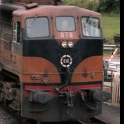
.thumb.jpg.0113bdc64cd74e8ef773620f140362dd.jpg)
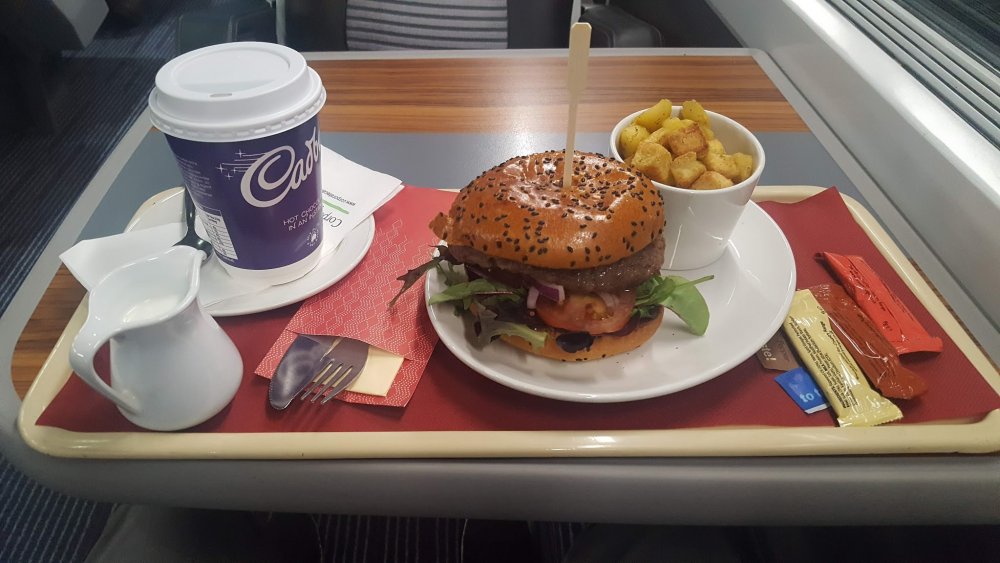
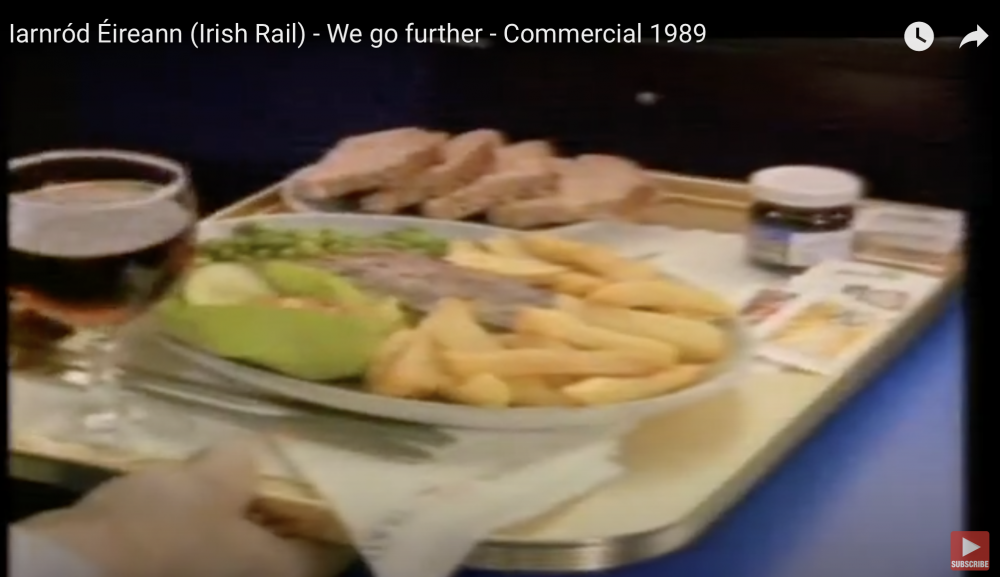



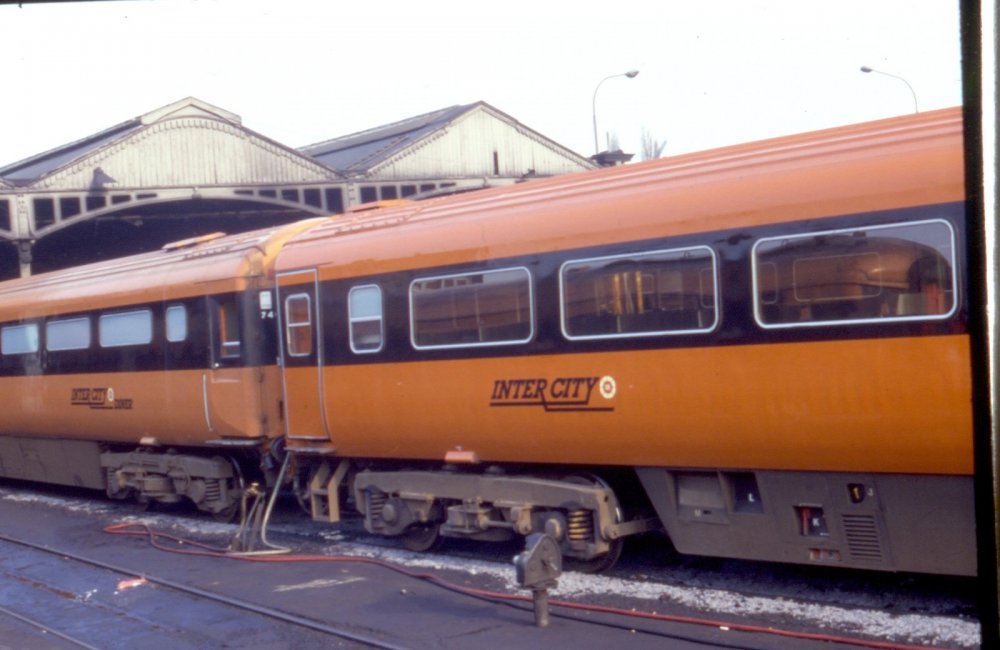
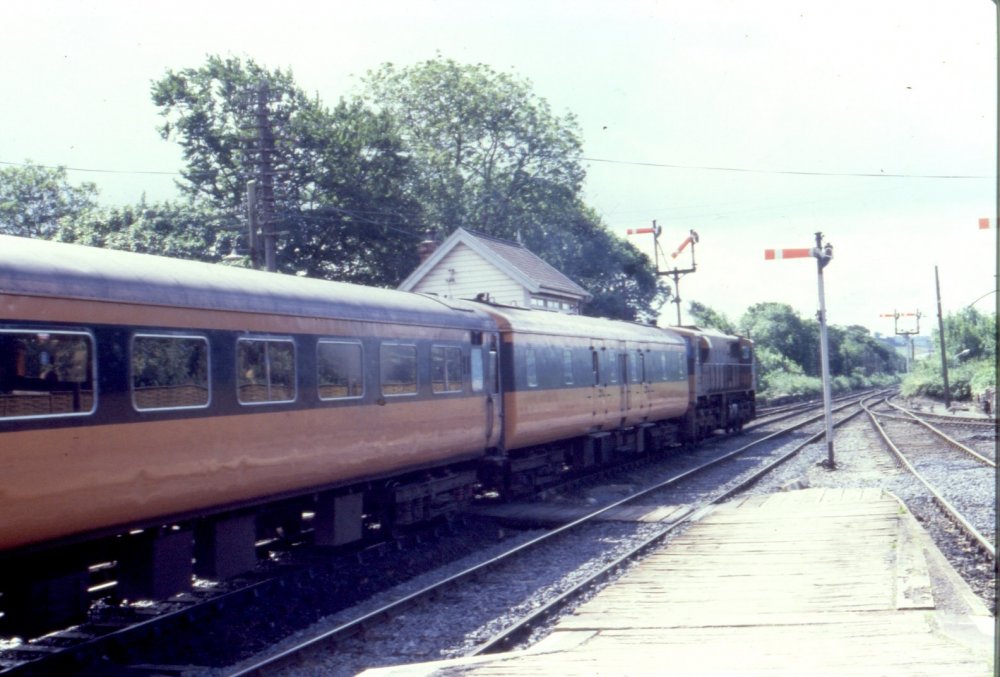
CIE/IR Mk2D formations.
in Questions & Answers
Posted
Thanks anyway mate, I saw one online years ago showing the exterior and interior of a Composite but stupidly forgot to save a copy and I've never found it since.
Now whenever I see an interesting image I save a copy immediately! (One learns the hard way... )
)